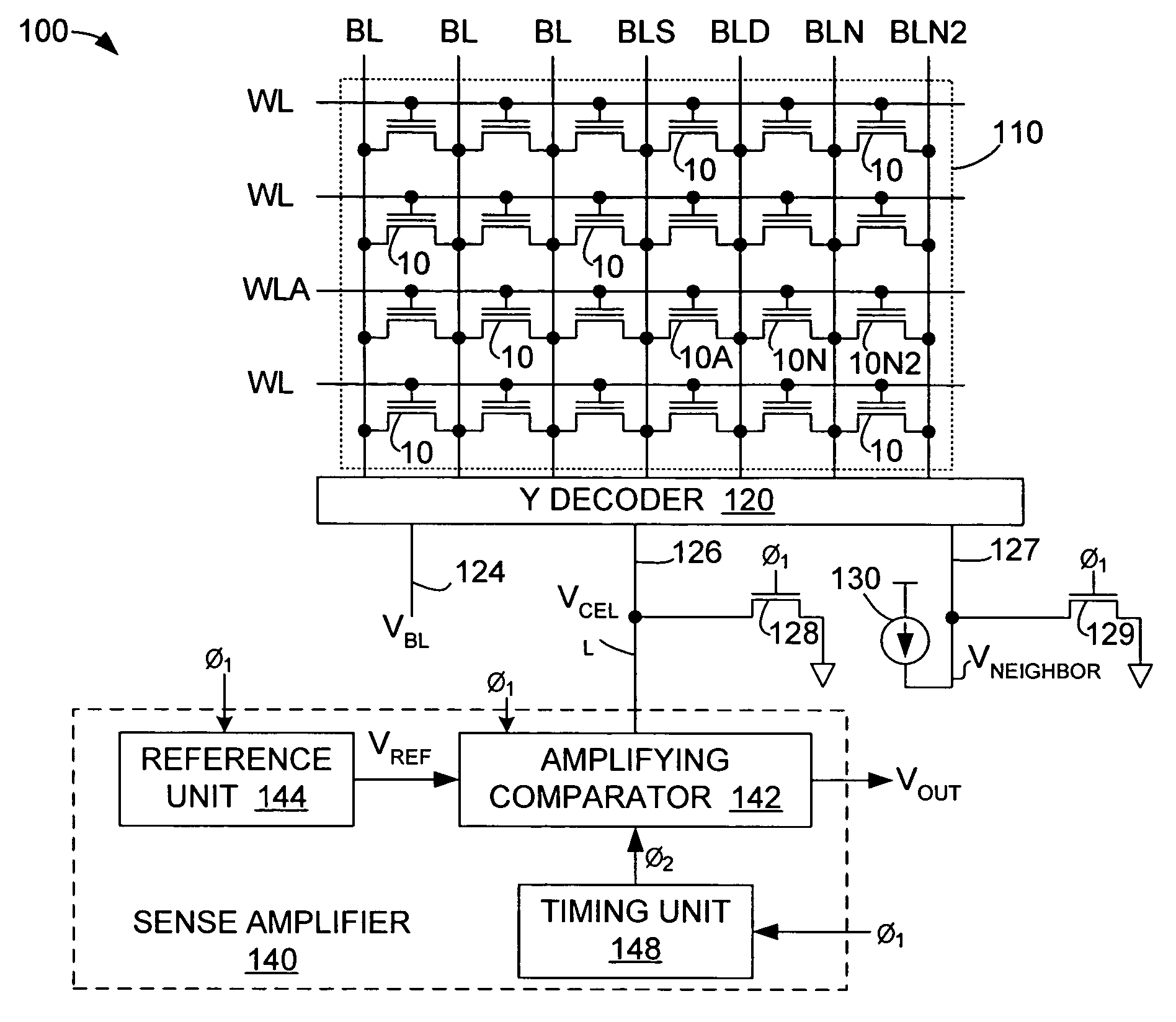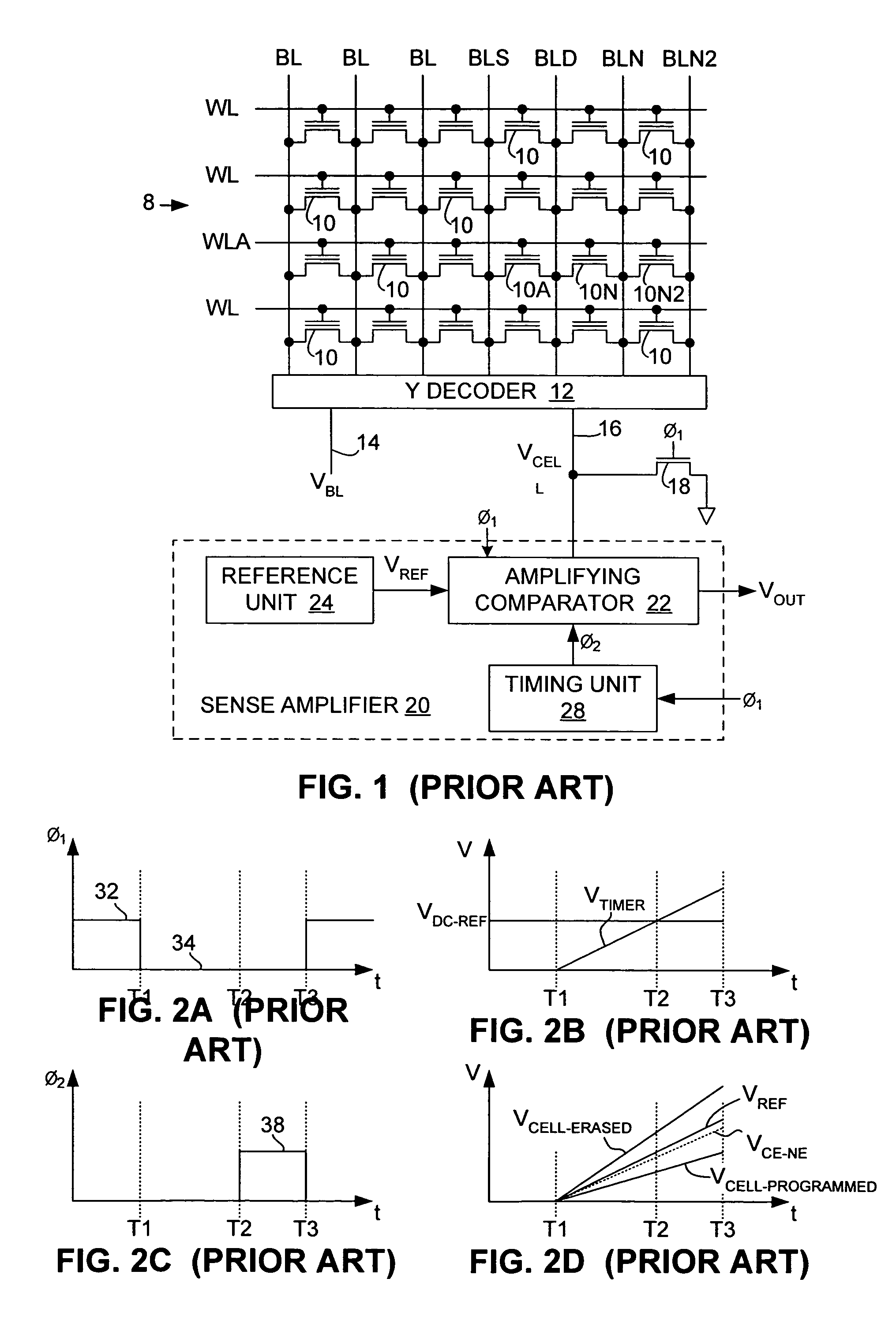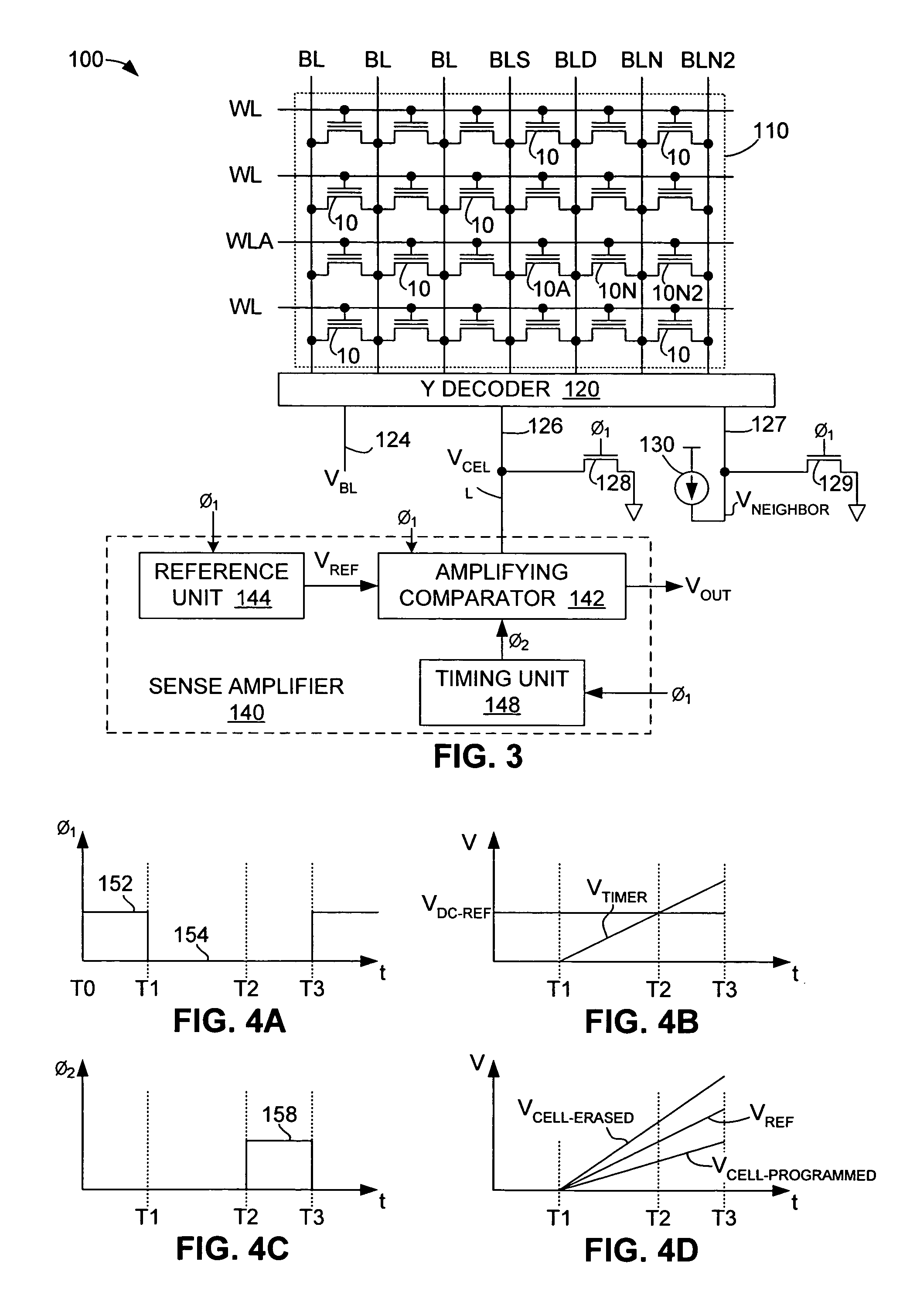Neighbor effect cancellation in memory array architecture
a memory array and neighbor effect technology, applied in the field of integrated circuit devices, can solve the problems of increasing the signal on the line bld, requiring a considerable amount of power, and consuming time for equalization operation, so as to minimize the leakage of the sensed cell signal
- Summary
- Abstract
- Description
- Claims
- Application Information
AI Technical Summary
Benefits of technology
Problems solved by technology
Method used
Image
Examples
Embodiment Construction
[0034] The present invention is directed to the operation of non-volatile memory (NVM) cells in a manner that prevents the erroneous neighbor effect described above. While the invention is described herein with specific reference to simplified NVM cells arranged in a simplified NVM array and read using simplified sense amplifier circuits, it is noted that the present invention may be applied to many types of NVM cells (e.g., EPROM, EEPROM, flash, one-time programmable (fuse) cells, and multi-bit NVM cells such as those disclosed in U.S. Pat. No. 6,011,725, which is incorporated herein by reference) be utilized in many circuit settings (e.g., as dedicated NVM devices, or part of a more complex integrated circuit). Accordingly, the memory circuits described below are intended to be illustrative and not limiting.
[0035]FIG. 3 shows a memory circuit 100 that utilizes a near-ground sensing procedure according to a first embodiment of the present invention. Memory circuit 100 includes an ...
PUM
 Login to View More
Login to View More Abstract
Description
Claims
Application Information
 Login to View More
Login to View More - R&D
- Intellectual Property
- Life Sciences
- Materials
- Tech Scout
- Unparalleled Data Quality
- Higher Quality Content
- 60% Fewer Hallucinations
Browse by: Latest US Patents, China's latest patents, Technical Efficacy Thesaurus, Application Domain, Technology Topic, Popular Technical Reports.
© 2025 PatSnap. All rights reserved.Legal|Privacy policy|Modern Slavery Act Transparency Statement|Sitemap|About US| Contact US: help@patsnap.com



